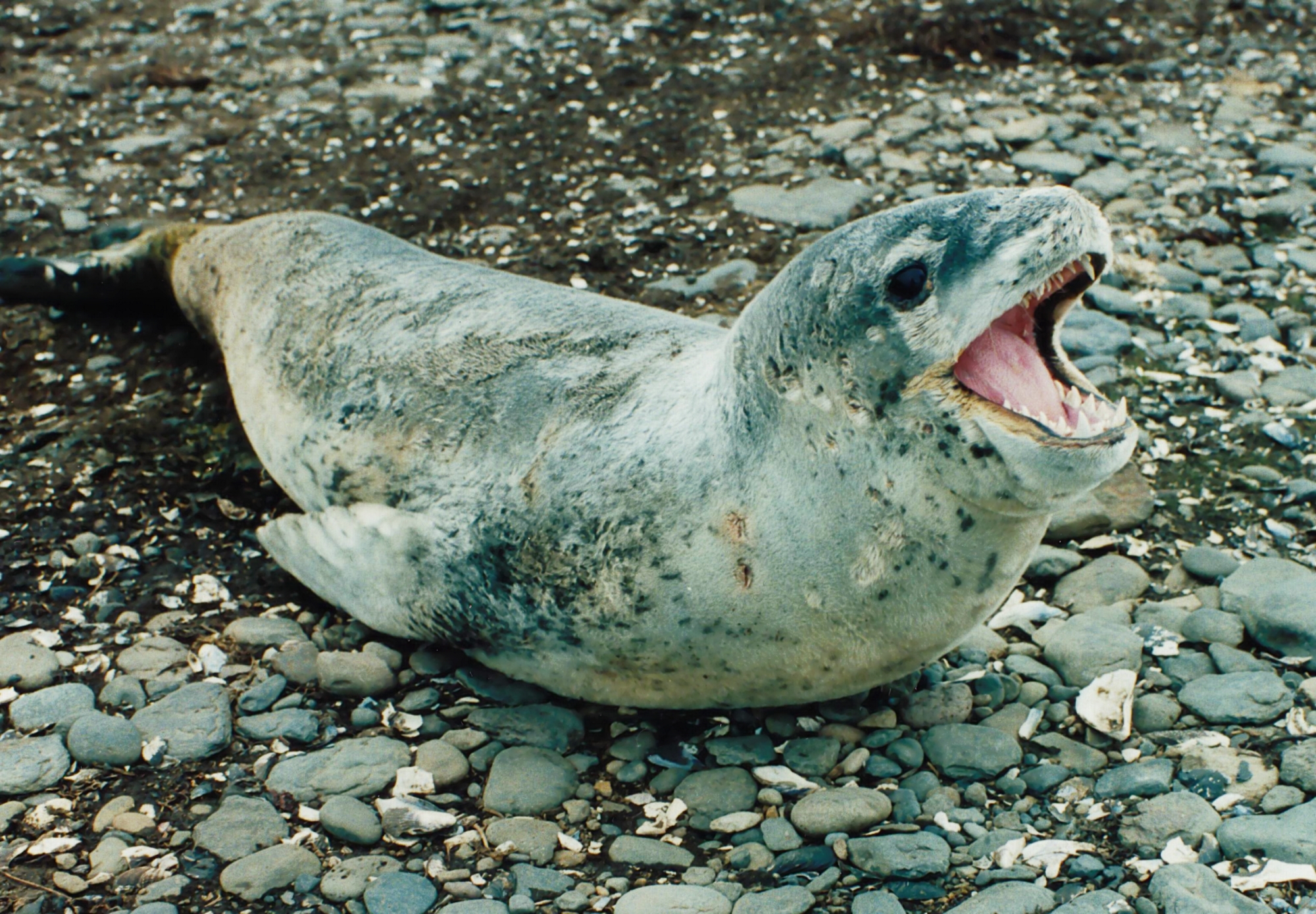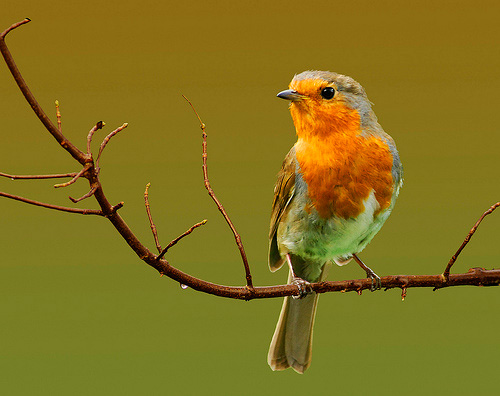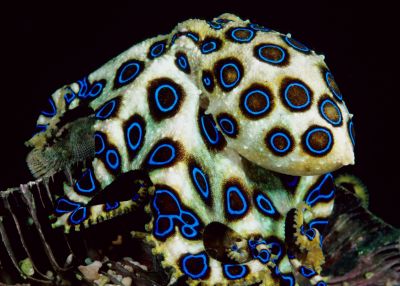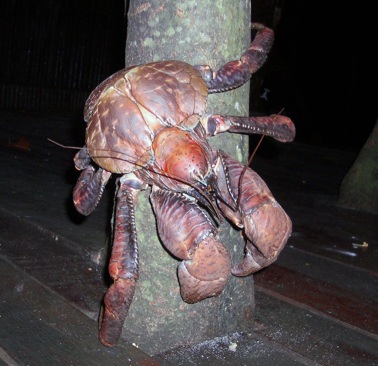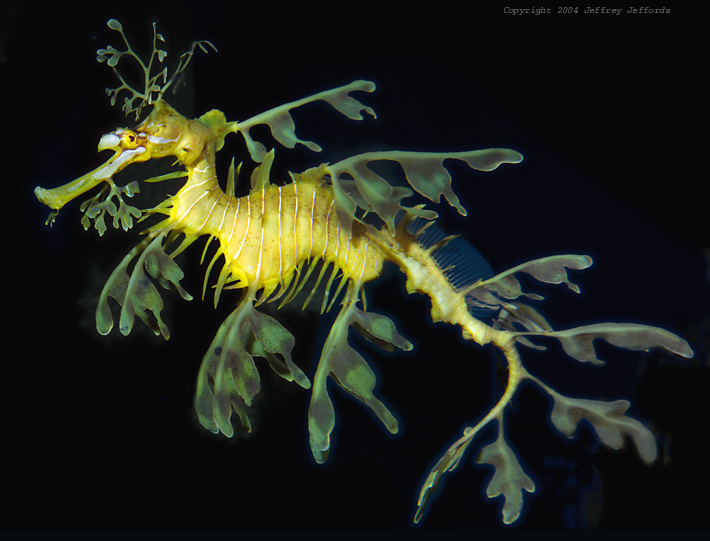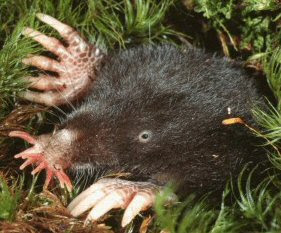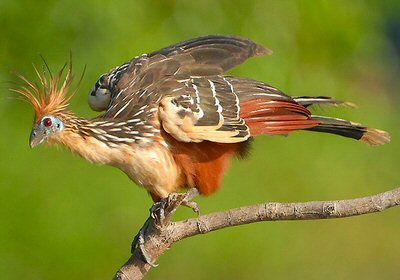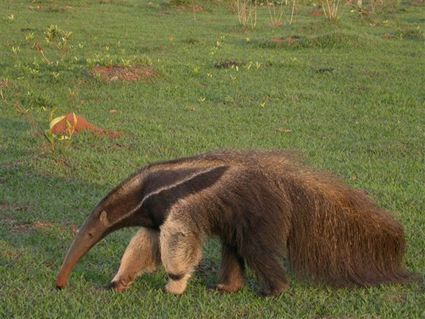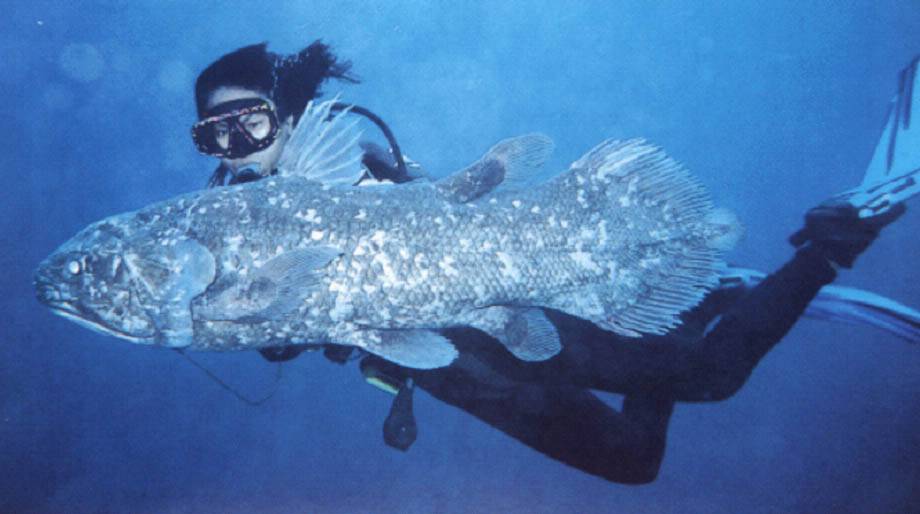Dragonfly is a generic term, referring to a group of insects with large, multifaceted eyes, two pairs of transparent wings and an elongated abdomen. Dragonflies are not to be confused with damsel flies. Although dragonflies have six legs they do not walk well, preferring to hover instead. They are some of the fastest insects in the world. They are predators preying on small insects such as mosquitoes, flies, bees, ants, and very rarely, butterflies.
They are usually found near lakes, streams, rivers, and ponds as their larvae, nymphs, are aquatic. In general, large dragonflies have a maximum speed of 10-15 meters per second or 22-34 miles per hour. They have an average cruising speed of 4.5 meters per second or 10 miles per hour.
Saturday, 14 May 2011
Monday, 9 May 2011
Leopard Seal
The leopard seal is the second largest seal in the Antarctic. It is most common along the coast of Antarctica and sub-Antarctic islands but they can also be found along southern Australia, New Zealand and other such areas. The leopard seal is quite large, the male generally around 17 feet or 5 meters and weighing around 454 kilograms or a 1000 pounds. It has a lifespan of twenty-six years, possibly more. Killer whales and large sharks are the only natural predators of this formidable seal.
The leopard seal has an unusual jaw that opens to 160 degrees and allows it to bite large animals. The leopard seal is a curious predator, sometimes playing with penguins that it does not intend to eat. Smaller leopard seals feed on squids and fish while larger ones may prey on penguins, and much less frequently other seals such as carbeater and elephant seals. Sea birds have also been found in leopard seal scat.
Leopard seals are potentially dangerous towards humans but attacks are rarely reported.
The leopard seal has an unusual jaw that opens to 160 degrees and allows it to bite large animals. The leopard seal is a curious predator, sometimes playing with penguins that it does not intend to eat. Smaller leopard seals feed on squids and fish while larger ones may prey on penguins, and much less frequently other seals such as carbeater and elephant seals. Sea birds have also been found in leopard seal scat.
Leopard seals are potentially dangerous towards humans but attacks are rarely reported.
Saturday, 7 May 2011
Shetland Sheepdog/Sheltie
The Shetland Sheepdog, sometimes shortened to Sheltie, is a domestic breed of excitable, and energetic herding dog. They are partly derived from the dogs used in Shetland for protecting and herding sheep. They are small to medium and come in a variety of colors, such as tri-color, blue Merle, sable/white and so on.
 They are small, most often 250-200 millimeters or 8-10 inches in height. They weigh on average 7-9 kilograms or 16-20 pounds. They have a litter size of 4-6 puppies and a lifespan of 12-15 years.
They are small, most often 250-200 millimeters or 8-10 inches in height. They weigh on average 7-9 kilograms or 16-20 pounds. They have a litter size of 4-6 puppies and a lifespan of 12-15 years.
Shelties have a high level of intelligence, according to Dr. Stanley Coren, an expert on animal intelligence, Shelties rank 6th out of the 132 breeds tested.
In their size group, this breed is excellent at dog agility competitions. They also excel at competitive obedience, showmanship, flyball, tracking and herding.
 They are small, most often 250-200 millimeters or 8-10 inches in height. They weigh on average 7-9 kilograms or 16-20 pounds. They have a litter size of 4-6 puppies and a lifespan of 12-15 years.
They are small, most often 250-200 millimeters or 8-10 inches in height. They weigh on average 7-9 kilograms or 16-20 pounds. They have a litter size of 4-6 puppies and a lifespan of 12-15 years.Shelties have a high level of intelligence, according to Dr. Stanley Coren, an expert on animal intelligence, Shelties rank 6th out of the 132 breeds tested.
In their size group, this breed is excellent at dog agility competitions. They also excel at competitive obedience, showmanship, flyball, tracking and herding.
Friday, 6 May 2011
Liger
The liger is a cross between a male lion and a tigress. It is different from the similar hybrid tiglon. The liger is the largest of all known felines. Ligers enjoy swimming, a charecteristic of tigers and, much like the lion are very social. Ligers exist only in captivity because the habitat of the parental species don't overlap.
Ligers are the largest cat in the world due to imprinted genes. It is erroneously believed that ligers continue to grow throughout their lives because of hormonal issues. Female ligers may also attain massive sizes, weighing around 320 kilograms or 705 pounds and reaching 3.05 meters or 10 feet. On a somewhat unrelated note, pumapards, a cross between a puma and leopards tend to show dwarfism. Ligers are the same size as the extinct American lion.
Ligers are the largest cat in the world due to imprinted genes. It is erroneously believed that ligers continue to grow throughout their lives because of hormonal issues. Female ligers may also attain massive sizes, weighing around 320 kilograms or 705 pounds and reaching 3.05 meters or 10 feet. On a somewhat unrelated note, pumapards, a cross between a puma and leopards tend to show dwarfism. Ligers are the same size as the extinct American lion.
Wednesday, 4 May 2011
Blue-ringed Octopus
They will pounce on their prey, paralyze them with venom and use their beaks to tear off pieces. They then suck out the flesh from a crustacean exoskeleton if necessary.
The blue-ringed octopus is 12-20 centimeters or 5-8 inches but has a venom powerful enough to kill humans. There is no available antivenom. The venom of the octopus contains tetrodotoxin, 5-hydroxytryptamine, hyaluronidase, tyramine, histamine, tryptamine, octopamine, taurine, acetylcholine, and dopamine. The main component is tetrodoxin, a toxin 10,000 more poisonous than cyanide.
Monday, 2 May 2011
First Multicellular Organisms Found to Live an Oxygen-Free Life
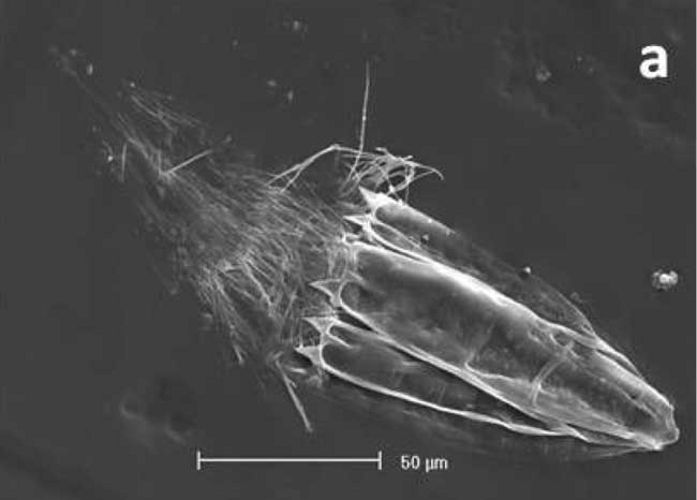
Unlike all previously discovered species, these strange creatures don`t use mitochondria, the cellular organelle than converts sugar and oxygen into water, CO2 and energy to power their cells. These organisms use an organelle much like the hydrogenosome, a cellular component used by certain microbes to produce energy using complex enzymatic reactions.
These unnamed organisms all belong to the phylum Loricifera are less than 0.04 inches long. This is not the first time scientists have discovered organisms in anoxic environment, but previous discoveries needed to surface for oxygen while these creatures do not. How these creatures evolved and what else is down there remains to be seen.
Saturday, 30 April 2011
Capybara
The capybara is the largest member of the rodent family. They are sometimes called "water pigs" because of their great size. Adult capybaras can be 130 centimeters long or 4.3 feet. Female capybaras are heavier than males, females are around 36 to 66 kilograms or 80 to 146 pounds. Males are typically weigh 34 to 61 kilograms or 75 to 135 pounds. The heaviest capybara known was recorded at 105.4 kilograms or 232 pounds.
The back legs of the capybara are slightly longer than its front legs and the snout is blunt with the eyes, nose, and ears on the top of the head. Capybaras are semi-aquatic animals living in much of South America near forested bodies of water. Capybaras are herbivores, mainly feeding on grass, aquatic plants and sometimes fruit and tree bark.
Capybaras can have a lifespan of 8-10 years in the wild but they average four as they are a main prey to many predatory animals such as the jaguar, the caiman, puma, ocelot, eagle, and the anaconda.
The back legs of the capybara are slightly longer than its front legs and the snout is blunt with the eyes, nose, and ears on the top of the head. Capybaras are semi-aquatic animals living in much of South America near forested bodies of water. Capybaras are herbivores, mainly feeding on grass, aquatic plants and sometimes fruit and tree bark.
Capybaras can have a lifespan of 8-10 years in the wild but they average four as they are a main prey to many predatory animals such as the jaguar, the caiman, puma, ocelot, eagle, and the anaconda.
Coconut Crab
They are generally nocturnal and remain hidden during the day coming out at night to forage. The coconut crab is a very large species of hermit crab known for its ability to crack coconuts with its strong pincers to eat the contents.
They have a general body length of 40 centimeters or 16 inches, can weigh up to 4.1 kilograms or 9 pounds and can have a leg span of more than 0.91 centimeters or 3 feet. Coconut crabs have a diet of fruits and other organic materials such as tortoise hatchlings and dead animals. In one experiment, a coconut crab was seen catching and eating a Polynesian rat.
Mara
Maras are a relative of the guinea pig family. There are two recognized species of mara, the Pantagonian and Chacoan mara. Pantagonian maras are often kept as pets and can be very social to humans if raised from a young age. In the wild, however, they avoid interaction with humans. Maras may even change their lifestyle, such as becoming nocturnal, simply to avoid humans.
Maras mate for life and produce one to three offspring a year. Babies are well developed and can start gazing within 24 hours. Maras are the fourth largest rodent in the world. Pantagonian maras are capable of running up to speeds of 29 kilometers or 18 miles per hour. Maras weigh over 11 kilograms or 24 pounds in adulthood.
Maras may amble, gallop, hop or bounce on all fours. Maras have been known to leap up to 1.83 meters, or 6 feet.
Maras mate for life and produce one to three offspring a year. Babies are well developed and can start gazing within 24 hours. Maras are the fourth largest rodent in the world. Pantagonian maras are capable of running up to speeds of 29 kilometers or 18 miles per hour. Maras weigh over 11 kilograms or 24 pounds in adulthood.
Maras may amble, gallop, hop or bounce on all fours. Maras have been known to leap up to 1.83 meters, or 6 feet.
Friday, 29 April 2011
Coati
Coatis are also known as the Brazilian aardvark, Mexican tejon, hog-nosed coon, pizotes, crackoons and snookum bears and they are a member of the raccoon family. They are diurnal and native to South America, Central America and south-western North America. There are many subspecies of the coati.
Adult coatis measure 33 to 69 centimeters or 13 to 27 inches. They weigh between 2 and 8 kilograms or 4.4 to 18 pounds and about the size of a large house cat. The male coati is almost twice the size of the female and can have large and sharp canine teeth.
Coatis are omnivores, feeding on mainly invertebrates such as tarantulas. They also eat fruit, small lizards, birds, birds' eggs and crocodile eggs. The snout of the coati, its formidable sense of smell and the paws unearth such invertebrates in a hog-like manner.
 When provoked, the coati can be a fierce fighter. Its strong jaws, sharp canines and sharp claws armed with a thick coat of fur can make it very difficult for its potential predators such as jaguars and dogs to seize the small mammal.
When provoked, the coati can be a fierce fighter. Its strong jaws, sharp canines and sharp claws armed with a thick coat of fur can make it very difficult for its potential predators such as jaguars and dogs to seize the small mammal.
In the wild coatis live for seven to eight years, in captivity they can live up to fifteen.
Adult coatis measure 33 to 69 centimeters or 13 to 27 inches. They weigh between 2 and 8 kilograms or 4.4 to 18 pounds and about the size of a large house cat. The male coati is almost twice the size of the female and can have large and sharp canine teeth.
Coatis are omnivores, feeding on mainly invertebrates such as tarantulas. They also eat fruit, small lizards, birds, birds' eggs and crocodile eggs. The snout of the coati, its formidable sense of smell and the paws unearth such invertebrates in a hog-like manner.
 When provoked, the coati can be a fierce fighter. Its strong jaws, sharp canines and sharp claws armed with a thick coat of fur can make it very difficult for its potential predators such as jaguars and dogs to seize the small mammal.
When provoked, the coati can be a fierce fighter. Its strong jaws, sharp canines and sharp claws armed with a thick coat of fur can make it very difficult for its potential predators such as jaguars and dogs to seize the small mammal.In the wild coatis live for seven to eight years, in captivity they can live up to fifteen.
Thursday, 28 April 2011
Olm
The olm is a blind amphibian living in the subterranean waters of caves in parts of Europe including Albania, Serbia and several others. This European creature is sometimes called the "Human Fish" because of its skin color. Other nicknames are cave salamander and white salamander.
This little guy is most well-known for its adaptations to a life without light. The eyes of the olm are undeveloped, while it's other senses such as smell and hearing are very acute. It lacks any pigmentation in its skin, and lives a completely aquatic life. It also exhibits neoteny, meaning it retains larval characteristics like external gills, much like the axolotl or mud puppy.
Generally, the olm is 20-30 centimeters long, or 8-12 inches. The olm swims by the twisting of its eel-like body, aided only slightly by its poorly developed legs. It is a predatory animal and feeds on small crabs, snails, and occasionally insects.
When food is scarce, the olm is capable of reducing its activity and metabolic rate, and can even reabsorb its own tissues if necessary. Controlled experiments have proven that an olm can survive up to ten years without food, another adaptation to life in a cave.
Lifespan is an estimated 58 years.
This little guy is most well-known for its adaptations to a life without light. The eyes of the olm are undeveloped, while it's other senses such as smell and hearing are very acute. It lacks any pigmentation in its skin, and lives a completely aquatic life. It also exhibits neoteny, meaning it retains larval characteristics like external gills, much like the axolotl or mud puppy.
Generally, the olm is 20-30 centimeters long, or 8-12 inches. The olm swims by the twisting of its eel-like body, aided only slightly by its poorly developed legs. It is a predatory animal and feeds on small crabs, snails, and occasionally insects.
When food is scarce, the olm is capable of reducing its activity and metabolic rate, and can even reabsorb its own tissues if necessary. Controlled experiments have proven that an olm can survive up to ten years without food, another adaptation to life in a cave.
Lifespan is an estimated 58 years.
Tuesday, 26 April 2011
Hagfish
There are many different species of hagfish, a primitive fish. Although technically scientists are still debating whether hagfish are actual fish. Hagfish are also sometimes called "slime eels", because of their ability to secrete slime. Hagfish are the only living animals with a skull but no vertebral column. The earliest fossil record dates back approximately 550 million years ago, in the Lower Cambrian Period.
The hagfish is on average about half a meter or 18 inches, the largest specimen was recorded at 127cm. Hagfish have long, bodies, and paddle-like tails. The hagfish only has simple eyespots that can only detect light and dark. Hagfish have no fins and have a single nostril. They have an unusual pair of horizontally moving structures with tooth-like projections for pulling off food. The mouth of the hagfish has two pairs of horny, comb-shaped teeth that is able to protract and retract.
As mentioned before, when the hagfish is caught by a predator, it can secrete a gelatinous, coat of mucus that expands into a sticky goo when combined with water, as seen in the video below. It removes any residual slime from the body by forming itself into a overhand knot and scraping the slime of the body. An adult hagfish can secrete enough slime to turn a 20 liter or 5 gallon bucket of water into slime within a matter of minutes.
The hagfish is on average about half a meter or 18 inches, the largest specimen was recorded at 127cm. Hagfish have long, bodies, and paddle-like tails. The hagfish only has simple eyespots that can only detect light and dark. Hagfish have no fins and have a single nostril. They have an unusual pair of horizontally moving structures with tooth-like projections for pulling off food. The mouth of the hagfish has two pairs of horny, comb-shaped teeth that is able to protract and retract.
As mentioned before, when the hagfish is caught by a predator, it can secrete a gelatinous, coat of mucus that expands into a sticky goo when combined with water, as seen in the video below. It removes any residual slime from the body by forming itself into a overhand knot and scraping the slime of the body. An adult hagfish can secrete enough slime to turn a 20 liter or 5 gallon bucket of water into slime within a matter of minutes.
Monday, 25 April 2011
Loggerhead Shrike
Look at this bird, it is a loggerhead shrike, a species of shrike. It can be found Southern Ontario, Quebec Alberta, and south to Mexico. It seems normal. However there is a reason why loggerhead shrikes are often referred to as "butcher birds". This is because the shrike enjoys catching small invertebrates and impaling them on thorns or other sharp objects. This helps them tear the flesh into smaller, more manageable chunks and serves as a larder for the bird to return to at a later time. This strange feeding habit also allows the shrike to consume the toxic lubber grasshopper. The bird simply picks the grasshopper up, impales it, then waits one or two days for the toxins in the grasshopper to degrade, then it eats it.
 Shrikes are territorial, and these territories are
Shrikes are territorial, and these territories aredefended from other shrikes.
Sunday, 24 April 2011
Mimic Octopus
The mimic octopus are a species of octopus with an extremely impressive mimic skill. It is able to copy around seventeen other animals by changing its movement, arm position, texture and color. These animals include lion fish, brittle stars, flounders, sea snakes, giant crabs, jellyfish, sea shells, sea anemones and mantis shrimp. It grows up to 60 centimeters or 2 feet. Its normal coloring is brown with with white stripes or spots. The mimic octopus is the first octopus ever observed to impersonate other animals.
Based on observation, the mimic octopus decides on what to mimic depending on local predators. For example, when the mimic octopus was attacked a damselfish, it changed to imitate a sea snake, a predator of the damselfish.
Mimic octopi normally eats small fish, crabs, and worms. Also, mimic octopus also prey on themselves like many other octopi, their bodies are made of soft, nutritious muscle, without spine or armor. Their main predators are barracuda and small sharks.
Based on observation, the mimic octopus decides on what to mimic depending on local predators. For example, when the mimic octopus was attacked a damselfish, it changed to imitate a sea snake, a predator of the damselfish.
Mimic octopi normally eats small fish, crabs, and worms. Also, mimic octopus also prey on themselves like many other octopi, their bodies are made of soft, nutritious muscle, without spine or armor. Their main predators are barracuda and small sharks.
Tapir
Tapirs are a large, herbivorous, mammal similar in shape to a pig with a short prehensile snout. Tapirs inhabit jungle and forest areas in regions of South America, Central America and Southeast Asia. There are four main species of tapir such as the Malayan, Baird's, Mountain and Brazillian. Their closest relatives are horses and rhinoceroses.
Sizes vary between different species but are generally about 2 meters long or 7 feet, stand about a meter high at the shoulder or 3 feet. They can weigh 150-300 kilograms or 330-700 pounds.
 All species of tapirs have oval, white-tipped ears, stubby tails and splayed, hoofed toes. They have four toes on the front and three on the back. This helps them walk on the soft, muddy ground. Baby tapirs have a wide variety of spots and stripes to aid in camouflage.
All species of tapirs have oval, white-tipped ears, stubby tails and splayed, hoofed toes. They have four toes on the front and three on the back. This helps them walk on the soft, muddy ground. Baby tapirs have a wide variety of spots and stripes to aid in camouflage.
The proboscis of the tapir is highly flexible, allowing it to grasp leaves or foliage normally out of reach of the tapir.
The natural lifespan of the tapir is 25-30 years, both in the wild and zoos.
Sizes vary between different species but are generally about 2 meters long or 7 feet, stand about a meter high at the shoulder or 3 feet. They can weigh 150-300 kilograms or 330-700 pounds.
 All species of tapirs have oval, white-tipped ears, stubby tails and splayed, hoofed toes. They have four toes on the front and three on the back. This helps them walk on the soft, muddy ground. Baby tapirs have a wide variety of spots and stripes to aid in camouflage.
All species of tapirs have oval, white-tipped ears, stubby tails and splayed, hoofed toes. They have four toes on the front and three on the back. This helps them walk on the soft, muddy ground. Baby tapirs have a wide variety of spots and stripes to aid in camouflage.The proboscis of the tapir is highly flexible, allowing it to grasp leaves or foliage normally out of reach of the tapir.
The natural lifespan of the tapir is 25-30 years, both in the wild and zoos.
New Species of Stingray Discovered
Two new species of freshwater stingray have been discovered. These rays are described as "pancakes with noses". They are informally called pancake stingrays. These specimens of stingray have mostly been found Rio Nanay, near Iquitos, Peru. The new stingrays are quite rare and according to biologist Nathan Lovejoy, who was part of the team that made this discovery, it took a considerable amount of time to collect enough specimens to accurately describe the rays.
"The most important thing about this discovery tells us that there are quite likely to be other fish in the Amazon yet to be discovered and described." says Lovejoy.
Below is an X-ray image of one of the rays.
"The most important thing about this discovery tells us that there are quite likely to be other fish in the Amazon yet to be discovered and described." says Lovejoy.
Below is an X-ray image of one of the rays.
Leafy Sea Dragon
The sea dragon has a long snout that it uses to feed, it mainly eats plankton but it can also eat shrimp and small fish. Oddly enough, leafy sea dragons have no teeth, which is extremely rare amongst animals that consume shrimp and small fish.
They are about 20-24 centimeters long or 8-10 inches.
Star-nosed Mole
The star-nosed mole is a small hamster sized rodent found in wet areas of eastern Canada and north-eastern United States. These animals are easily identified by eleven pairs of pink fleshy appendages surrounding their snout, used as a touch organ with over 25,000 sensory receptors. These are called Eimer's organs, in which this mole uses to feel is way around. The star-nosed mole is capable of, amazingly, smelling underwater.
The star-nosed mole eats small invertebrates, including insects, aquatic insects, worms, and mollusks such as snails. The mole is an excellent swimmer and is capable of foraging along the bottoms of streams and ponds. The mole is active both day and night and remains active in the winter. Little is known about the social behavior of the mole but it is suspected that they live in colonies.Predators include birds of prey such as the red-tailed hawk, the great horned owl, various skunks and other members of the weasel family, large fish and the domestic cat.
The star-nosed mole eats small invertebrates, including insects, aquatic insects, worms, and mollusks such as snails. The mole is an excellent swimmer and is capable of foraging along the bottoms of streams and ponds. The mole is active both day and night and remains active in the winter. Little is known about the social behavior of the mole but it is suspected that they live in colonies.Predators include birds of prey such as the red-tailed hawk, the great horned owl, various skunks and other members of the weasel family, large fish and the domestic cat.
Saturday, 23 April 2011
Tiger
The tiger is very well-known, unlike some of the other animals on this blog. They are the largest member of the family Felidae. There are many subspecies of tiger, such as the Siberian, the Bengal, Sumatran and many more. The most numerous of the subspecies is the Bengal while the largest is the Siberian tiger. The tiger is native to much of both eastern and southern Asia.
The tiger is comparable in size to even to the largest of the extinct felids. They can reach up to 3.3 metres or 11 feet and can weigh up to 300 kilograms or 660 pounds. The tiger's most recognizable feature is the orange and black vertical stripes. Tigers are generally solitary and territorial, requiring large amounts of territory to support their prey demands. On a poll by Animal Planet, the tiger is the world's favourite animal. Despite this data, the tiger is endangered because of habitat destruction and poaching.
The tiger and an average lifespan of 10-15 years in the wild but can live up to 20 in captivity.
The tiger is comparable in size to even to the largest of the extinct felids. They can reach up to 3.3 metres or 11 feet and can weigh up to 300 kilograms or 660 pounds. The tiger's most recognizable feature is the orange and black vertical stripes. Tigers are generally solitary and territorial, requiring large amounts of territory to support their prey demands. On a poll by Animal Planet, the tiger is the world's favourite animal. Despite this data, the tiger is endangered because of habitat destruction and poaching.
The tiger and an average lifespan of 10-15 years in the wild but can live up to 20 in captivity.
Komondor Dog
Komondor dogs are a large, domesticated Hungarian breed of white, guardian dogs with a long, rope-like coat. These dogs are sometimes called mop dogs. The reason for this is obvious. These dogs used to be used for guarding livestock and other property.
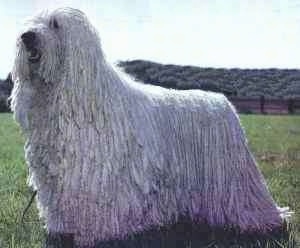 The Komondor is large and strong, ideal traits for a guardian dog, and its long, thick coat protects the dog from weather, vegetation and wild animals. The coat also looks enough like that of a sheep to blend into a flock and thus give it an advantage when protecting the flock from wolves and other predators.
The Komondor is large and strong, ideal traits for a guardian dog, and its long, thick coat protects the dog from weather, vegetation and wild animals. The coat also looks enough like that of a sheep to blend into a flock and thus give it an advantage when protecting the flock from wolves and other predators.
The Komondor is quite large, many are over 75 centimetres or 30 inches tall. The length of the Komondor coat is about 20-27 centimetres long and is the heaviest amount of fur of any canine in the world. The coat of the Komondor dog takes two or three days to dry if it's wet.
 The Komondor is large and strong, ideal traits for a guardian dog, and its long, thick coat protects the dog from weather, vegetation and wild animals. The coat also looks enough like that of a sheep to blend into a flock and thus give it an advantage when protecting the flock from wolves and other predators.
The Komondor is large and strong, ideal traits for a guardian dog, and its long, thick coat protects the dog from weather, vegetation and wild animals. The coat also looks enough like that of a sheep to blend into a flock and thus give it an advantage when protecting the flock from wolves and other predators.The Komondor is quite large, many are over 75 centimetres or 30 inches tall. The length of the Komondor coat is about 20-27 centimetres long and is the heaviest amount of fur of any canine in the world. The coat of the Komondor dog takes two or three days to dry if it's wet.
Friday, 22 April 2011
Hoatzin
The hoatzin is an unusual species of tropical bird found in swamps, riverine forests and mangroves in the Amazon. It is roughly the size of a pheasant around 65 centimeters long and has a long neck and small head with a crest. The hoatzin eats leaves and fruit in which germs ferment and create a foul odor. Because of this, hoatzins are sometimes called stinkbirds.
 Hoatzins are quite noisy, emitting a variety of hoarse calls, grunts, croaks, hisses and grunts. These calls are often accompanied by movements such as wing-spreading. These calls are used to maintain contact between individuals in groups, and warn off threats and intruders.
Hoatzins are quite noisy, emitting a variety of hoarse calls, grunts, croaks, hisses and grunts. These calls are often accompanied by movements such as wing-spreading. These calls are used to maintain contact between individuals in groups, and warn off threats and intruders.
 Hoatzins are quite noisy, emitting a variety of hoarse calls, grunts, croaks, hisses and grunts. These calls are often accompanied by movements such as wing-spreading. These calls are used to maintain contact between individuals in groups, and warn off threats and intruders.
Hoatzins are quite noisy, emitting a variety of hoarse calls, grunts, croaks, hisses and grunts. These calls are often accompanied by movements such as wing-spreading. These calls are used to maintain contact between individuals in groups, and warn off threats and intruders.
Kakapo
The kakapo is also known as the owl parrot, is a species of large, flightless and nocturnal parrot found in New Zealand. Although it cannot fly, the kakapo is an excellent climber, and can also "parachute", by descending from treetops and spreading its wings. The kakapo can travel several meters and an angle of less than forty-five degrees. Since it has lost the ability to fly, the kakapo has developed strong legs, capable of walking up to five kilometers.
The kakapo is herbivorous, eating plants, seeds, fruits and sap from trees. It is particularly fond of the fruit of the rimu tree, and will feed on it exclusively during seasons when it is abundant.
An adult kakapo weighs between 2-4 kilograms, or 4.5-9 pounds. The male kakapo can grow to 20 centimeters long.
Giant Anteater
The giant anteater is the largest species of anteater. It is a solitary animal, found in grasslands, deciduous forests and more. It feeds mainly on ants and termites, eating up to 30, 000 in a day. The giant anteater is one of the few animals without any teeth, even as an adult. Instead, it crushes insects, using hard growths found on the inside of its mouth( that are not teeth) and flabby stomach.
They have one of the lowest body temperatures of all living mammals, around 32.7oC. When threatened, the giant anteater will stand up on its hind legs and rapidly strikes with its claws or hugs the attackers like a bear. The adult anteater is able of fending off and even killing its main predators, big cats such as the cougar and jaguar.
The giant anteater grows to a size of up to 7 feet (2.1 m) in length, with a 4-foot-long (1.2 m) head and torso, and a 3-foot-long (0.91 m) tail. On average, it weighs from 65 to 140 pounds (29 to 64 kg)
They have one of the lowest body temperatures of all living mammals, around 32.7oC. When threatened, the giant anteater will stand up on its hind legs and rapidly strikes with its claws or hugs the attackers like a bear. The adult anteater is able of fending off and even killing its main predators, big cats such as the cougar and jaguar.
The giant anteater grows to a size of up to 7 feet (2.1 m) in length, with a 4-foot-long (1.2 m) head and torso, and a 3-foot-long (0.91 m) tail. On average, it weighs from 65 to 140 pounds (29 to 64 kg)
Coelacanth
The coelacanth is the oldest living fish to date. Until it's recent discovery, it was believed to have been extinct over 65 million years ago. The coelacanth is believed to be the missing link between fish and the tetrapods, vertebrate animals with four limbs. The coelacanth was believed to have gone extinct at around the end of the Cretaceous period.
 The coelacanth is unique from other fish as it has a brain that occupies only 1.5% of the braincase, the other 98.5% is filled with fat. Its kidneys are fused into a single organ, sitting on the floor of its abdomen instead of under the backbone. Furthermore, its minuscule heart is more or less a straight tube.
The coelacanth is unique from other fish as it has a brain that occupies only 1.5% of the braincase, the other 98.5% is filled with fat. Its kidneys are fused into a single organ, sitting on the floor of its abdomen instead of under the backbone. Furthermore, its minuscule heart is more or less a straight tube.
There are only two living species of the coelacanth.
 The coelacanth is unique from other fish as it has a brain that occupies only 1.5% of the braincase, the other 98.5% is filled with fat. Its kidneys are fused into a single organ, sitting on the floor of its abdomen instead of under the backbone. Furthermore, its minuscule heart is more or less a straight tube.
The coelacanth is unique from other fish as it has a brain that occupies only 1.5% of the braincase, the other 98.5% is filled with fat. Its kidneys are fused into a single organ, sitting on the floor of its abdomen instead of under the backbone. Furthermore, its minuscule heart is more or less a straight tube.There are only two living species of the coelacanth.
Subscribe to:
Posts (Atom)

.jpg)

